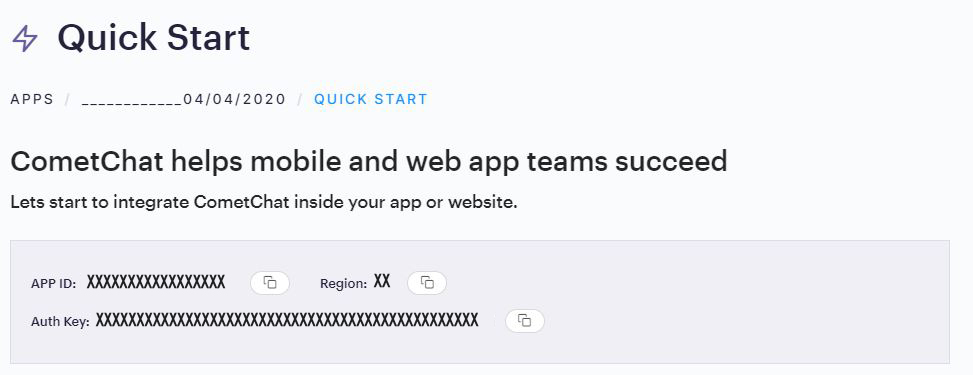CometChat enables you to add voice, video & text chat for your website & app. This guide demonstrates how to add chat to a React Native App using CometChat.
- 1-1 & Group Conversations
- Voice & video calling & conferencing
- Rich Media Attachments
- Typing Indicators
- Custom Messages
- Read receipts
- Online Presence Indicators
- Message History
- Single Sign-on
- Webhooks
- Bots
- Users & Friends List
- Groups List
- Conversations List
- Threaded Conversations
Push Notification | Email Notification | SMS Notification | Thumbnail Generation | Link Preview | Rich Media Preview | Voice Transcription | Smart Reply | Message Translation | Emojis | Polls | Reactions | Stickers | Video Broadcasting | Collaborative Documents | Collaborative Whiteboards | Data Masking Filter | Profanity Filter | Image Moderation| Sentiment Analysis | In-flight Message Moderation | Virus & Malware Scanner | XSS Filter
Before you begin, ensure you have met the following requirements:
✅ You have Visual Studio Code or any other code editor installed in your machine.
✅ To run native projects you will need to have Android Studio & Xcode installed in your machine.
✅ You have npm installed in your machine.
✅ You have read CometChat Key Concepts.
To setup React Native SDK, you need to first register on CometChat Dashboard. Click here to sign up.
Signup for CometChat and then:
- Create a new app: Click Add App option available → Enter App Name & other information → Create App
- At the Top in QuickStart section you will find Auth Key & App ID or else you can head over to the API & Auth Keys section and note the Auth Key and App ID
-
Install via NPM
1. Run the following command to install the CometChat React Native SDK
npm install @cometchat/chat-sdk-react-native@latest --save
You can refer to the below link for instructions on how to do so:
📝 Add CometChat Dependency
We suggest you call the init() method on app startup, preferably in the index.js file.
var appID = "APP_ID";
var region = "REGION";
var appSetting = new CometChat.AppSettingsBuilder().subscribePresenceForAllUsers().setRegion(region).build();
CometChat.init(appID, appSetting).then(
() => {
console.log("Initialization completed successfully");
},
error => {
console.log("Initialization failed with error:", error);
}
);ℹ️ Note: Make sure to replace region and appID with your credentials. |
|---|
Once initialisation is successful, you will need to create a user. You need to use createUser() method to create user on the fly.
let authKey = "AUTH_KEY";
var uid = "user1";
var name = "Kevin";
var user = new CometChat.User(uid);
user.setName(name);
CometChat.createUser(user, authKey).then(
user => {
console.log("user created", user);
},error => {
console.log("error", error);
}
);ℹ️ Note: Make sure that UID and name are specified as these are mandatory fields to create a user.
Once you have created the user successfully, you will need to log the user into CometChat using the login() method.
var UID = "SUPERHERO1";
var authKey = "AUTH_KEY";
CometChat.getLoggedinUser().then(
user => {
if(!user){
CometChat.login(UID, authKey).then(
user => {
console.log("Login Successful:", { user });
},
error => {
console.log("Login failed with exception:", { error });
}
);
}else{
// User already logged in
}
}, error => {
console.log("getLoggedinUser failed with exception:", { error });
}
);| ℹ️ Note - The login() method needs to be called only once. Also replace AUTH_KEY with your App Auth Key. |
|---|
📝 Please refer to our Developer Documentation for more information on how to configure the CometChat SDK and implement various features using the same.
Thanks to the following people who have contributed to this project: 👨💻 @mayur-bhandari 👨💻 @jitvarpatil
Contact us via real time support present in CometChat Dashboard.






